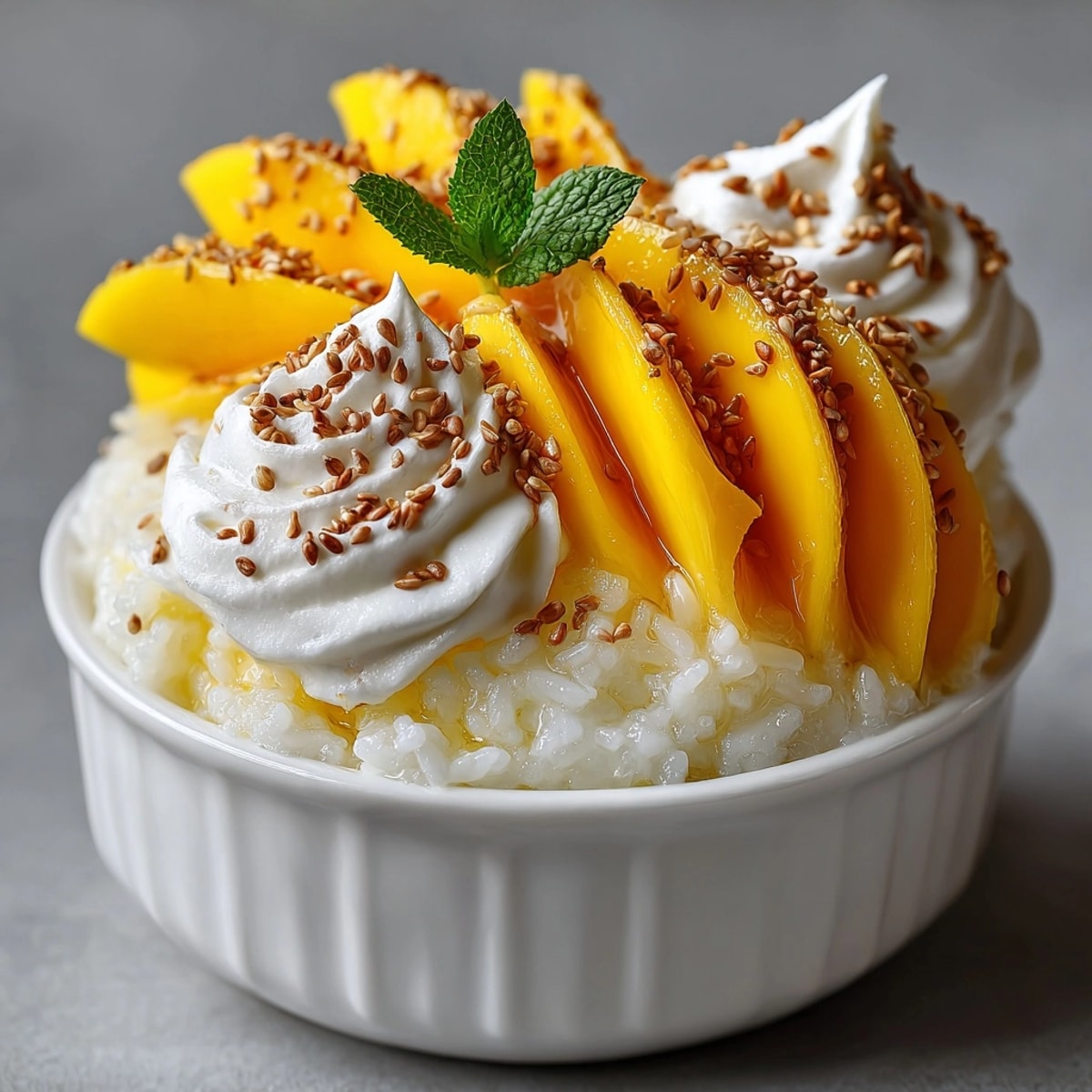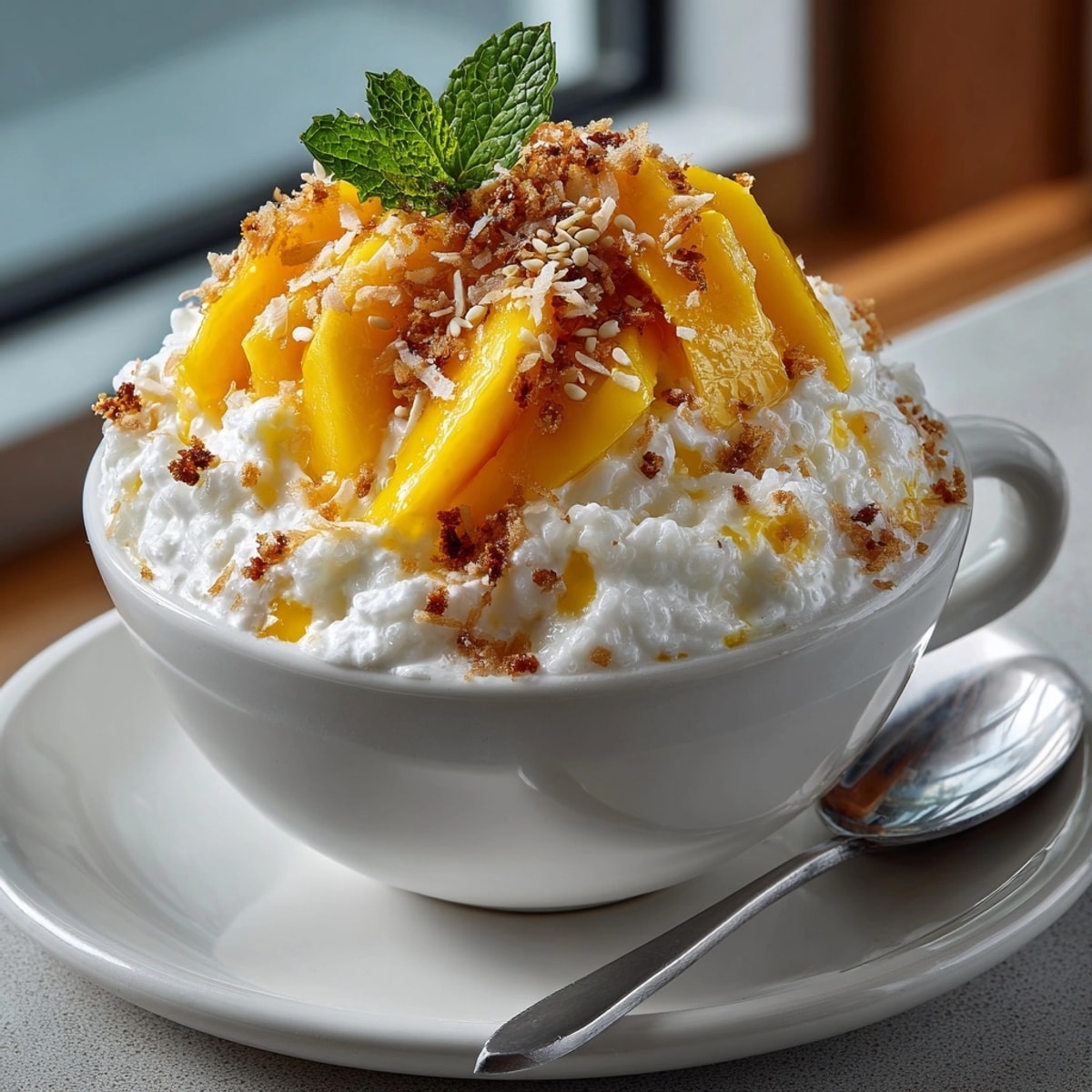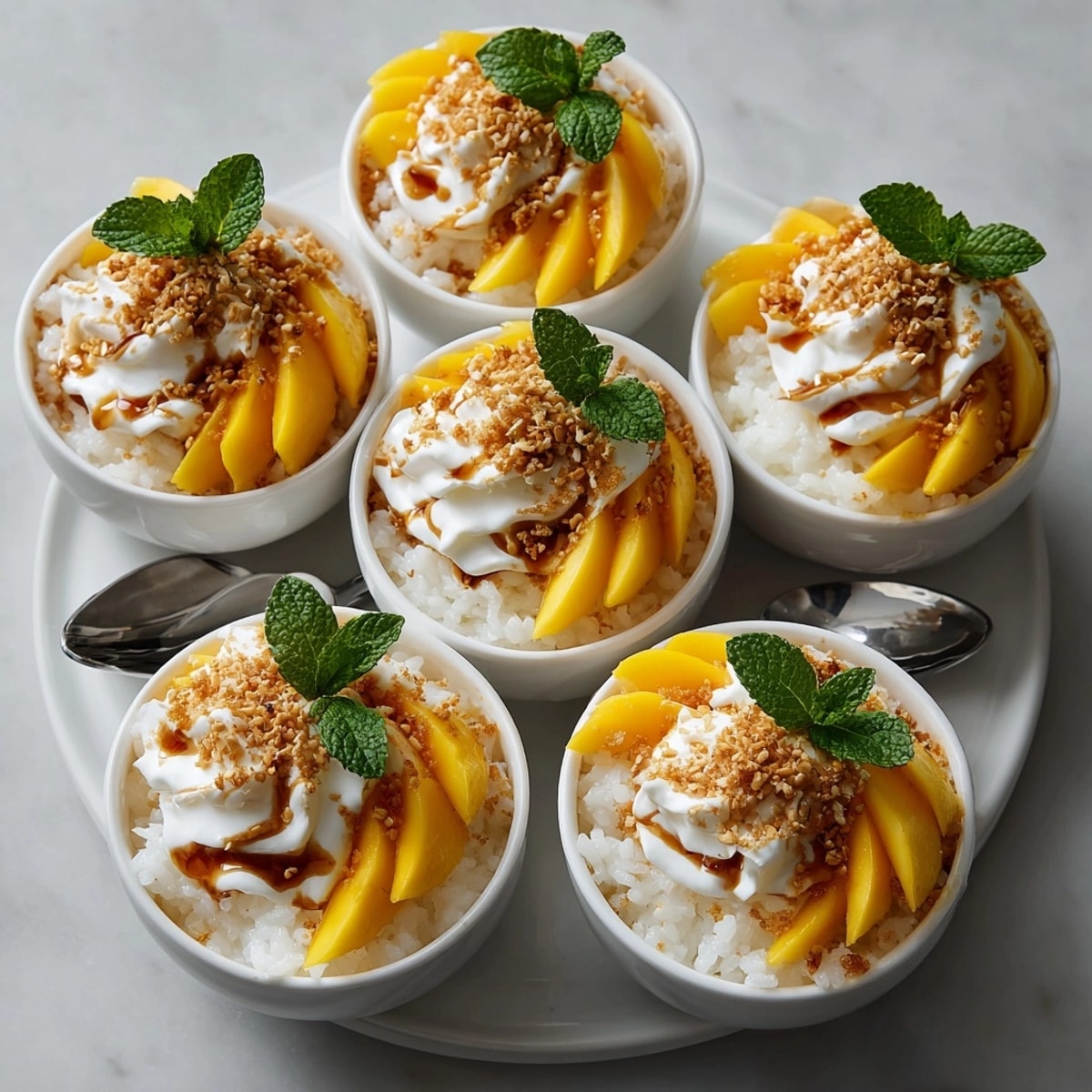 Save
Save Thai mango sticky rice cups are little bursts of summer joy—fragrant coconut rice layered with ripe mango and silky coconut cream. This dessert turns a beloved Thai treat into shareable cups that are as beautiful as they are delicious. It is my go-to make-ahead dessert for picnics and casual dinners when I want something both impressive and refreshing.
I first made these for a friend’s housewarming and watched everyone light up as they lifted their very own little cup. Ever since, this has become my signature dessert for summer gatherings.
Ingredients
- Thai glutinous sticky rice: brings authentic chewy texture choose short-grain rice labeled glutinous or sweet for best results
- Water: is essential for soaking and steaming softens the grains and ensures tenderness
- Full-fat coconut milk: delivers rich flavor look for coconut milk with minimal added gums or stabilizers for pure taste
- Granulated sugar: sweetens both the rice and the cream topping use organic or natural cane sugar if you prefer
- Salt: heightens flavor just a small pinch balances the sweetness
- Rice flour or cornstarch: thickens the topping rice flour is traditional but cornstarch works in a pinch check labels for allergens in processing
- Ripe mangoes: provide juicy bursts of sunshine Kent and Ataulfo types are particularly sweet and vibrant
- Toasted sesame seeds or mung beans: optional add subtle crunch and a lovely nutty touch
- Fresh mint leaves: optional brighten and add a pop of color
Instructions
- Rinse and Soak the Rice:
- Rinse sticky rice thoroughly in cold water until the water is basically clear. This step removes surface starch that can cause gumminess. Cover the rice with water and soak for at least four hours or ideally overnight for the best tender texture.
- Steam the Rice:
- Transfer the soaked rice to a steamer lined with cheesecloth or a clean thin towel. Steam over simmering water for about twenty-five to thirty minutes until the grains are translucent and fully tender. Keep the water at a gentle simmer and avoid letting it boil dry.
- Sweeten the Coconut Milk:
- While the rice is steaming warm one cup of coconut milk in a saucepan over medium heat. Add one third cup sugar and a quarter teaspoon salt. Stir gently and dissolve the sugar completely without letting the mixture boil.
- Infuse the Rice with Coconut Milk:
- Scrape hot rice into a broad mixing bowl and immediately pour the sweet coconut milk mixture over it. Stir gently but thoroughly so every grain gets coated. Cover the bowl and let it sit for about fifteen minutes for maximum flavor absorption.
- Make the Coconut Topping:
- Prepare the topping in a small saucepan. Combine a quarter cup coconut milk one tablespoon sugar a quarter teaspoon salt and one tablespoon rice flour or cornstarch. Cook over medium heat whisking constantly until you have a thick creamy sauce. Cool to room temperature.
- Assemble the Dessert Cups:
- Spoon the slightly sticky rice into small dessert cups gently pressing to compact a little. Layer several slices of ripe mango on top of each cup. Finish with a generous drizzle of your thickened coconut sauce.
- Finish and Garnish:
- For a festive touch sprinkle toasted sesame seeds or crispy mung beans over each cup. If desired tuck in a small fresh mint leaf to brighten the presentation.
 Save
Save Sweet ripe mango is my favorite part to play with. Sometimes I use a mix of yellow and red-fleshed varieties just for the extra wow. One summer visiting Chiang Mai my family and I tasted dozens—and ending the evening with sticky rice was the memory that stuck longest.
Storage Tips
Refrigerate dessert cups covered for up to two days though fresh mango is best the day of serving. If prepping ahead slice mango right before assembling to keep it juicy and bright. Warm the rice slightly before serving for a softer texture but cool rice is delightfully chewy as well.
Ingredient Substitutions
If mango is out of season swap with papaya pineapple or even ripe persimmon for a twist. The coconut milk can be switched with canned coconut cream thinned with a little water if you prefer something even richer. Use pearl barley as a stand-in for rice if glutinous options are unavailable noting it will change the character of the dessert.
Serving Suggestions
Serve as part of a Thai-themed dinner alongside jasmine tea or with a glass of aromatic Riesling. For festive gatherings use shot glasses or mini jars for a modern look. Add a dusting of toasted coconut flakes for extra texture.
Cultural Context
Though sticky rice and mango is deeply tied to Thai cuisine similar coconut rice treats can be found across Southeast Asia. It is especially popular during mango season and often enjoyed during Songkran the Thai New Year. The dessert is believed to balance the heat of spicy foods and bring a sense of celebration to the table.
Seasonal Adaptations
Substitute with ripe peaches or nectarines in late summer. Try tropical fruit salsa as a fun topping with diced mango kiwi and pineapple. Use pandan or vanilla to infuse the coconut milk for extra aroma.
Success Stories
Friends have asked for this recipe after every summer party. Once I brought a double batch to a picnic and not a single cup was left. These have become a special request from my niece who now associates them with every family occasion.
Freezer Meal Conversion
While mango does not freeze well the sticky coconut rice base can be frozen in a covered container for up to one month. Thaw in the fridge and warm gently before assembling with fresh fruit and sauce for best results.
 Save
Save Enjoy this delightful Thai dessert that's perfect for any occasion.
Recipe FAQs
- → How do you achieve perfect sticky rice texture?
Soak the glutinous rice for several hours before steaming, and use cheesecloth in the steamer for even cooking. This results in tender, translucent grains.
- → Can I prepare the components ahead of time?
Yes, both the sticky rice and coconut sauce can be made in advance. Assemble the cups just before serving for best texture.
- → What type of coconut milk works best?
Full-fat coconut milk delivers the creamiest texture and richest flavor. Avoid low-fat versions for optimal results.
- → Are there alternative fruits I can use?
Try ripe papaya or pineapple for a tropical twist if mangoes are not available, keeping the dish vibrant and fresh.
- → How should the dessert be served?
Serve in small dessert cups either at room temperature or slightly chilled. Garnish with sesame seeds or mint for added flair.